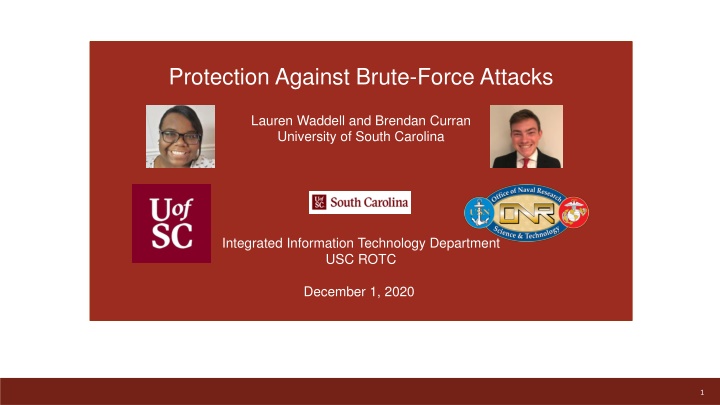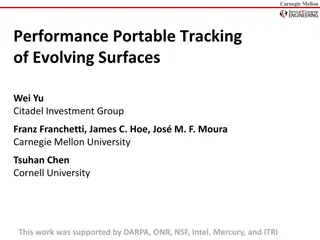
Modern NGFW Effectiveness Against Brute-Force Attacks
Explore how Next-Generation Firewalls (NGFWs) mitigate brute-force attacks, test their effectiveness, and provide best practices for deploying NGFWs to enhance network security against cyber threats like brute-force attacks. This study emphasizes the importance of analyzing network traffic and utilizing NGFW capabilities to combat malicious activities effectively.
Download Presentation

Please find below an Image/Link to download the presentation.
The content on the website is provided AS IS for your information and personal use only. It may not be sold, licensed, or shared on other websites without obtaining consent from the author. If you encounter any issues during the download, it is possible that the publisher has removed the file from their server.
You are allowed to download the files provided on this website for personal or commercial use, subject to the condition that they are used lawfully. All files are the property of their respective owners.
The content on the website is provided AS IS for your information and personal use only. It may not be sold, licensed, or shared on other websites without obtaining consent from the author.
E N D
Presentation Transcript
Protection Against Brute-Force Attacks Lauren Waddell and Brendan Curran University of South Carolina Integrated Information Technology Department USC ROTC December 1, 2020 1
Agenda Overview Motivation Advantages of NGFW Objectives Custom Scenario Mitigation Results Conclusion 2
Overview A brute force attack uses a large volume of requests/responses from the same source or destination IP address to break into a system. 3
Motivation Test the ability of Next Generation Firewalls (NGFWs) to mitigate the effectiveness of a brute force attack on a network. Firewall- network security device that monitors incoming and outgoing network traffic and decides whether to allow or block specific traffic based on a defined set of security rules. Two types: Traditional Stateful NGFW 4
Advantages of NGFW Set Application layer specific rules Deep Packet Inspection See full content of packet header NGFW powerful scanner 5
Objectives The goal of this project is: To determine the effectiveness of a modern Next-generation Firewall (NGFW) to detect brute- force attacks To provide best practices when deploying a NGFW to prevent such attacks. Use Ncrack(an open-source tool) to understand the anatomy of brute-force attacks Implement a brute-force protection policy Protect the network against attacks to well-known services such as SSH and FTP. 6
Mitigation Security Policy to allow Traffic to flow between zones Vulnerability Profile (VP) Brute Force Signatures Detected Attach VP to security rule 8
Results Monitor Threat Log 9
Conclusion Security engineers must develop skills to analyze network traffic. Threat logs are essential tools for traffic analysis, for identifying cyber attacks, and for mitigating them. NGFWs are effective to mitigate brute force attacks on a network. 10






















